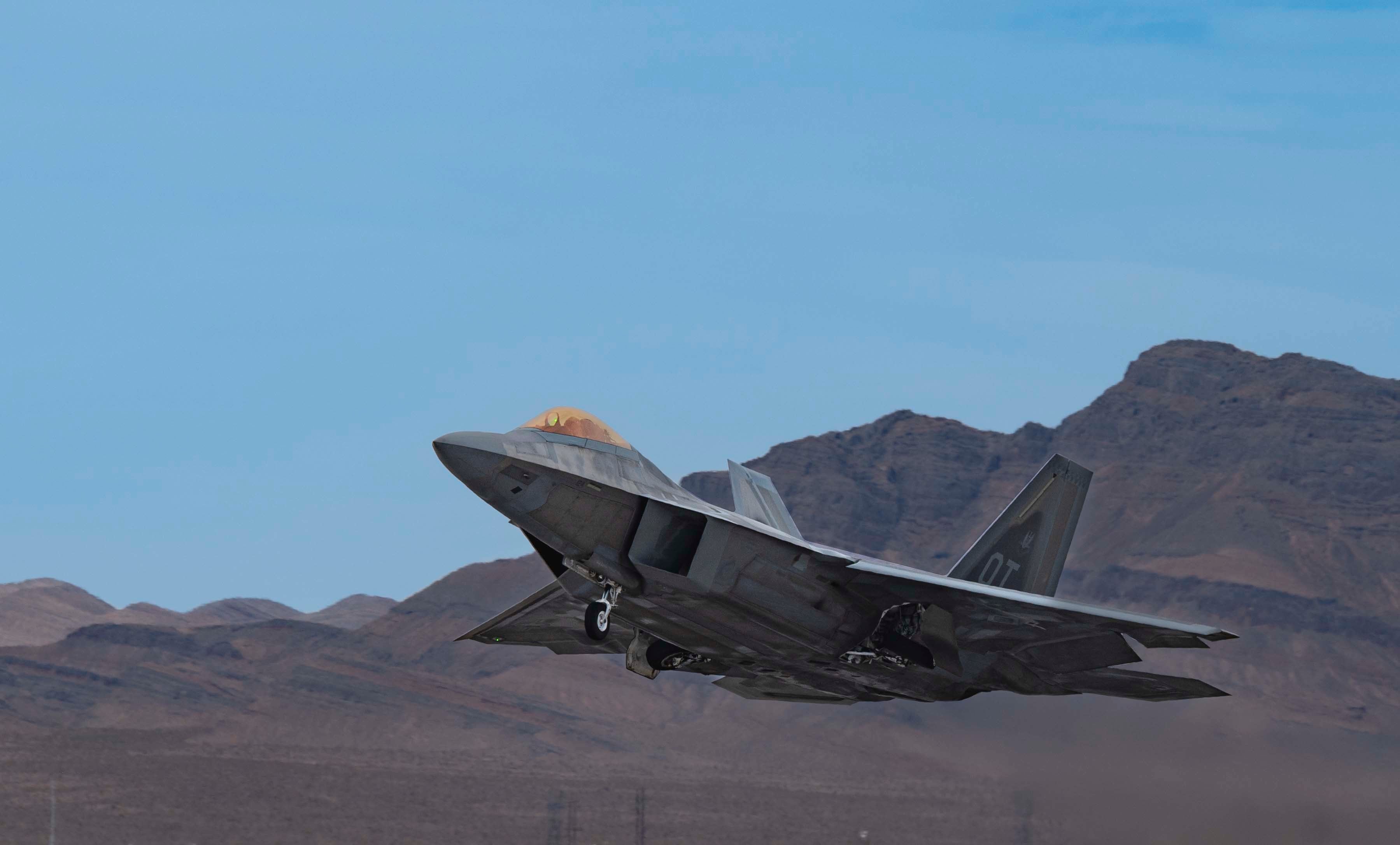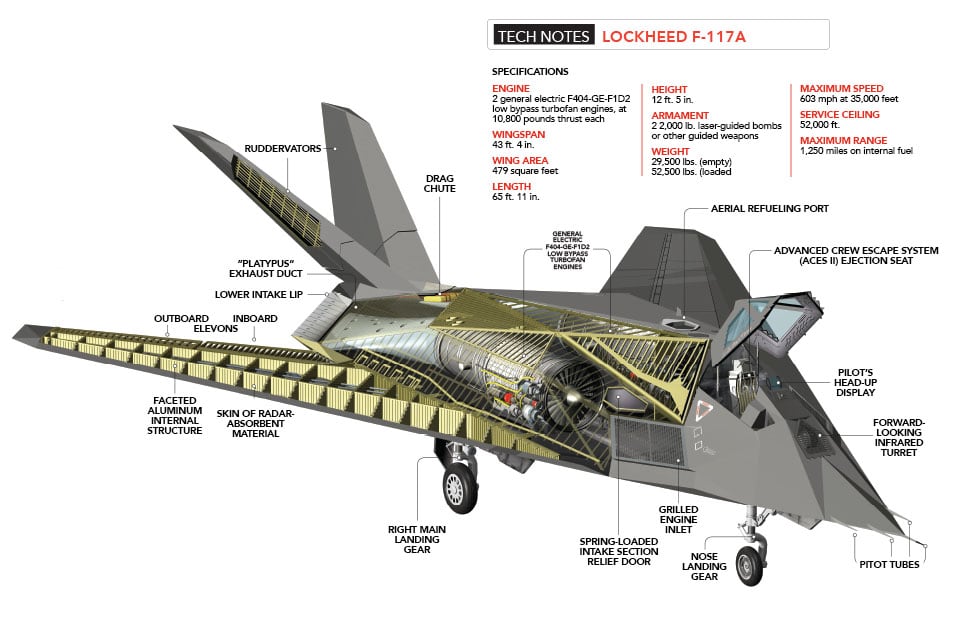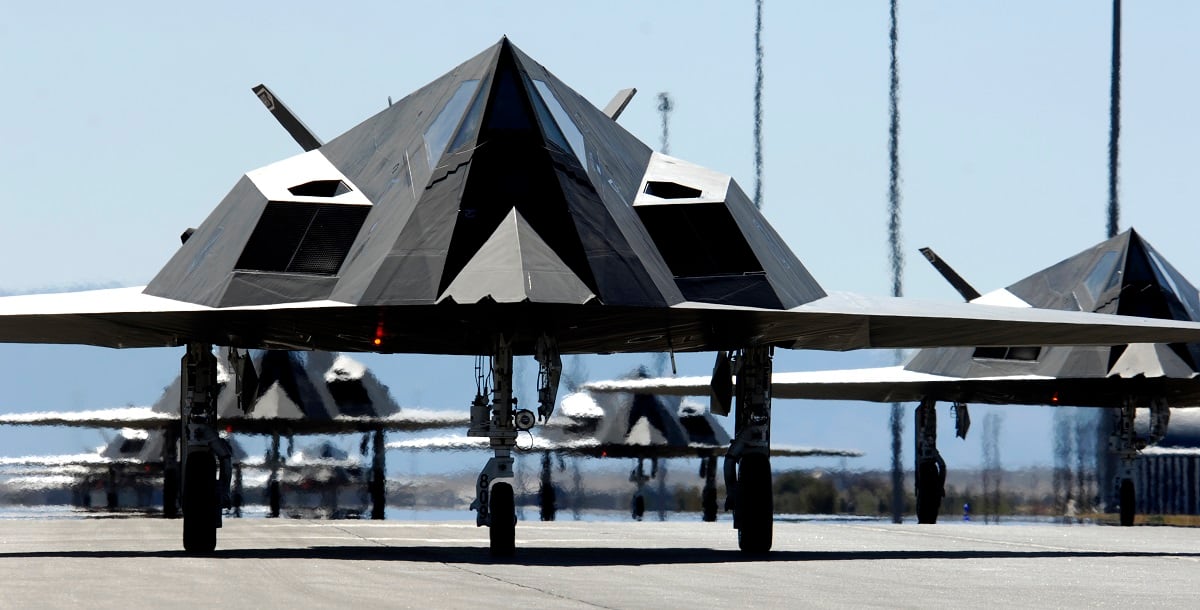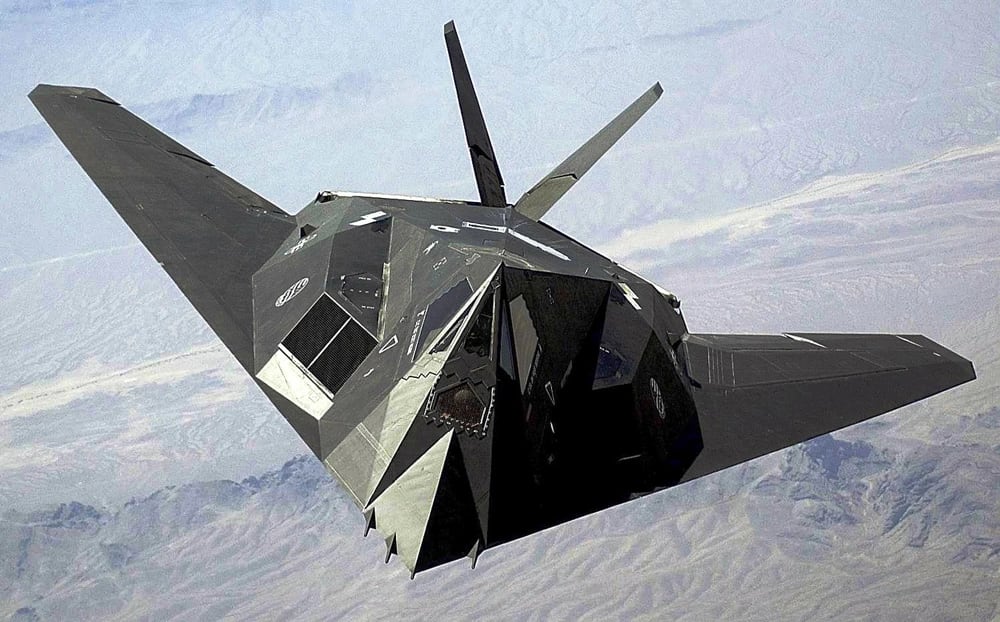The Lockheed F-117 Nighthawk, known to the world as the “Stealth Fighter,” entered operational service in 1989 with a limited role in the invasion of Panama, but the public became more aware of the aircraft when it saw widespread use in combat during the first Gulf War in 1990-91.
The airplane employed faceted angles across its entire surface and consequently had a remarkably small radar cross section, making it extremely difficult to detect while in flight. The F-117 was also coated in plates lined with radar-absorbing material (RAM) held in place with a special adhesive. Details about the composition of the F-117′s RAM remain classified to this day, but analysts believe it is made of ferromagnetic particles embedded in neoprene sheets, which absorbs radar energy.
RELATED

Until recently, the public had, essentially, no way to view an F-117 up close. That’s been changing as a small number of F-117s have been released to museums for the first time since Congress passed legislation in 2017 ending a requirement that the aircraft “be maintained in a condition that would allow recall of those aircraft to future service.”
Hill Aerospace Museum near Ogden, Utah, received its F-117 in August 2020, and the aircraft is nearing completion of an extensive restoration. The museum’s Nighthawk, serial number 82-0799, rolled off the assembly line in 1982 at Lockheed’s fabrication plant in Burbank, California. It first flew in combat during Operation Desert Storm and eventually amassed 54 combat sorties across Operations Desert Storm, Allied Force and Iraqi Freedom.
Over its operational lifetime, 82-0799 flew as part of the 4450th Tactical Group and was based out of Tonopah Test Range in Nevada. The 4450th was the de facto home to the first F-117 squadrons and where much of the developmental work on the aircraft and the training of its pilots took place. It is worth noting that all F-117 flights out of Nevada took place at night to keep the secret craft out of sight of Soviet spy satellites. Aircraft 82-0799 also flew out of Holloman Air Force base in New Mexico as part of the 49th Fighter Wing when that unit handled F-117 operations.

The museum at Hill was chosen to receive its Nighthawk because of its institutional knowledge of the airplane. In December of 1998, Hill Air Force Base’s Air Logistics Center became responsible for repairing battle and crash damage to F-117s through the 649th Combat Logistics Support Squadron. This role required teams of Hill personnel to deploy around the world as needed to work on F-117s. The 649th performed this mission until 2008, when the F-117 retired from operational service. All of this translated to a deep familiarity with the care and handling of F-117s among personnel associated with Hill AFB.
The restoration team, including restoration lead Brandon Hedges and key team members Tim Randolph, George Burkey, Brandon Neagle and Dave Mitchell, have devoted an enormous number of man-hours to the restoration. Randolph, who was an F-117 crew chief during Desert Storm, recalled that the Nighthawk was a “tricky airplane” from a maintenance point of view, as it included parts from various other aircraft, including the main landing gear from the A-10, heads-up display from the F-15, ejection seat from the F-15/16, engines from the F/A-18 (minus the afterburner) and avionics and fly-by-wire system from the F-16.
The aircraft arrived at the museum in a bare-bones condition, stripped clean and with wings and tail removed. The plane was also lacking all fluids and both engines. Still, the restoration team received a few lucky breaks: 82-0799 arrived with a complete cockpit and, perhaps more importantly, a full tail assembly. The tail had been removed, but the museum had not expected it at all and believed it would need to be fabricated. Nonetheless, 82-0799 has tested the restoration team’s skills. Fully deprived of its classified outer coating, RAM and all of its leading edges, the aircraft on arrival looked very little like the F-117s that the public has come to know. The team had to replicate the appearance of a fully functional F-117 using only off-the-shelf materials.

The restoration has been accomplished on an extremely limited budget, made possible by the hard work of a dedicated (and unpaid) team that make use of a significant amount of donated material. Per Hedges, the entire restoration has only cost $4,000, a staggeringly small number compared to the typical investment required for most aircraft restorations; paint alone can often cost more than $10,000 for fighter aircraft restorations and far more for bombers.
An industrial supplier of automobile paint donated appropriate overlay material. In addition to paint, the restoration team further simulated RAM with Platinum Patch compound purchased in bulk at home improvement retailers. Perhaps the greatest challenge was recreating all the various leading edges of the entire airframe from scratch. The restoration team tried many different materials and construction methods to find a solution that looked just right. They ended up constructing most of the leading edges from a mixture of sheet metal and fiberglass panels. As of this writing, the restoration is approximately 85% complete and the aircraft is currently on display even as work continues.
Up close, and even though incomplete, 82-0799 is still a wonder to behold. Perched next to an SR-71C Blackbird (its spiritual forerunner), the F-117 appears much larger in person than it looks in photographs; in fact, it is actually about the same size as an F-15. The interior of the port bomb bay door is, surprisingly, graced by a handmade painting of the comic book character the Silver Surfer perched atop an F-117, a nod to the airplane’s nickname of “Midnight Rider.” Visitors to the museum now have the opportunity to see, up close and in person, an aircraft previously protected from public view that changed the history of military aviation in a lasting and meaningful way.
This article was originally published on HistoryNet.com.








